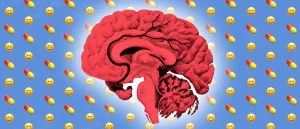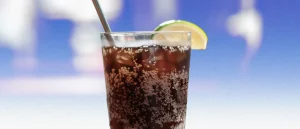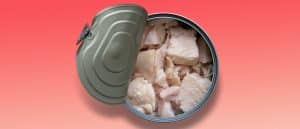Increase Dopamine Naturally With These 7 Mood-Boosting Foods
If you’ve ever lacked motivation or excitement around a particular project or event only to feel totally different a few days later when, suddenly, your enthusiasm returned and you were back on top of the world, that’s dopamine at the wheel (1).
Dopamine can be a double-edged sword. Just as it links pleasure to positive actions that help us survive, achieve and advance—the effects of dopamine can also lead you astray when we draw similar connections to less productive sources of so-called pleasure that feel good in the short term, but don’t serve us in the long run (2).
If you’ve experienced highs and lows like this, then like most people, you’ve ridden the dopamine rollercoaster. Luckily, there are natural ways to increase and balance dopamine levels through healthy foods and lifestyle factors. Read on to better understand what dopamine is, how it works, and ways to support steady, long-lasting dopamine levels.
What Is Dopamine?
Dopamine is both a hormone and neurotransmitter that sends signals to the nerve cells in your brain and throughout your body, to influence a number of important actions, like reward and pleasure. However, it’s also involved with movement, memory, behavior, sleep, and arousal.
As human beings, we’re wired to survive, therefore our brains are designed to release dopamine to drive motivation and acknowledge reward any time we do something that advances our survival, i.e. eating, completing a task, or winning a competition.
But dopamine doesn’t discern between what’s necessary and unnecessary, which is why so many people get hooked on the dopamine release they get from unhealthy “quick fixes” like junk food, alcohol, sex, nicotine, and drugs.
The brain associates those pleasurable vices with reward and sometimes can create a pattern (3) where we crave more and more until it becomes an addiction.
The body is fairly efficient at managing dopamine levels but in some cases, it may produce too little, leading to a lack of motivation and feelings of lethargy, depression, and listlessness. In severe cases, dopamine deficiencies can lead to conditions like ADHD and Parkinson’s disease.
On the flip side, your body can also produce too much dopamine, leading to insomnia and reactive and aggressive behavior. In severe cases, heightened levels of dopamine can also lead to Schizophrenia. (4,5)
How Does Dopamine Work?
In order to stay energized, content, and motivated, dopamine needs to be well balanced. But how does it work and how can we healthily produce more if we’re deficient?
As a recap, dopamine is a monoamine neurotransmitter, which means it relies on an amino acid to be made—or synthesized. The amino acid required to make dopamine is tyrosine, which we can get in two different ways.
- Eat protein-rich foods. Beef, chicken, and cheese all contain high amounts of tyrosine.
- Eat foods rich in phenylalanine, another amino acid, which converts to tyrosine in the body. (6,7)
Simple enough, eat more foods high in amino acids tyrosine and phenylalanine and you may increase dopamine levels in the brain (8,9). See which foods rank the highest for both below.
7 Foods That May Boost Dopamine Naturally
Because tyrosine and phenylalanine are essential for making dopamine, eating foods high in both amino acids is your best strategy to increase dopamine levels naturally.
The daily recommended intake for tyrosine and phenylalanine is 11 mg per pound of body weight. So if you’re a 200-pound male, you should aim for a combined 2200 mg of the two amino acids a day (e.g., 1100mg of tyrosine and 1100 mg of phenylalanine). But the ratio of one amino acid to the other doesn’t matter, you can get the whole requirement from just one. Just aim for 11mg per pound of body weight. Here are the foods that contain the highest levels of both amino acids.
| Food source | Tyrosine content (mg, % RDI) | Phenylalanine content (mg, % RDI) |
|---|---|---|
| 1 Beef, pork and chicken (6 ounces) | Beef 2174 mg, 248% RDI Pork chops 2088 mg, 239% RDI Chicken 1964 mg, 224% RDI |
Beef: 2297 mg, 262% RDI Pork chops: 2190 mg, 250% RDI Chicken 2500 mg, 251% RDI |
| 2 Salmon (6 ounces) | 2052 mg, 235% RDI | 1846 mg, 211% RDI |
| 3 Firm tofu (1 cup) | 1707 mg 262 % RDI | 2104 mg, 240% RDI |
| 4 Skim milk (16 ounces) | 833 mg, 95% RDI | 858 mg, 98% RDI |
| 5 Ricotta cheese (½ cup) | 739 mg, 84% RDI | 1846 mg, 211% RDI |
| 6 White beans (1 cup) | 490 mg, 56% RDI | 942 mg, 108% RDI |
| 7 Canned tuna (3 ounces) | 762 mg, 87% RDI | 881 mg, 101% RDI |
What Foods Decrease Dopamine?
Based on our list of dopamine boosters, it’s safe to say that low-protein diets won’t move the needle if you’re looking to increase dopamine levels.
Beyond that, science is still a little light on foods that have a negative impact on dopamine levels. There are some earlier studies done on animals that show consuming high levels of saturated fat like butter, coconut oil, sausage, and bacon may diminish dopamine levels but more research on humans is needed (10,11,12).
Other Ways to Increase Dopamine Levels
Cold water therapy
If you haven’t tried cold-water plunging or cryotherapy, increasing dopamine is another reason to give it a go. Cold therapy is already famous for its ability to reduce inflammation and muscle soreness, improve sleep, and more but research also shows that it can significantly boost dopamine levels—by 250 percent to be exact (13). In this particular study, the dopamine spike was not short-lived either. Participants showed elevated dopamine levels for three hours after their 14-degree Celsius plunge.
Exercise
There have been a number of animal and human studies examining the relationship between exercise and its effect on the brain’s neurotransmitters such as dopamine. The findings all indicate a positive relationship between exercise and elevating levels of dopamine, even if the results vary depending on exercise type and intensity (14, 15).
Supplementation
Tyrosine and L-phenylalanine, the two amino acids that dopamine is derived from, are also available in supplement form and are believed to help increase levels of dopamine. According to the Cleveland Clinic, you can also support healthy dopamine levels with omega-3 fatty acids, magnesium, L-theanine, and vitamins D, B5, and B6, all of which are either precursors or support nutrients in the production of dopamine (16). But always be sure to check with your health care provider first before starting a new supplement regimen.
References
Nature, 28 Aug. 2019, https://www.nature.com/articles/s41386-019-0492-7
Rosen, Jill. “Why Is Breaking Bad Habits Hard? Our Brains Are Biased by Past Rewards.” https://hub.jhu.edu/2016/02/11/dopamine-addiction-brain-science/
“Cravings.” The Nutrition Source, 14 Dec. 2021, https://www.hsph.harvard.edu/nutritionsource/cravings/
“Dopamine: What It Is, Function and Symptoms.” Cleveland Clinic, https://my.clevelandclinic.org/health/articles/22581-dopamine
Watson, Stephanie. “Dopamine: The Pathway to Pleasure.” Harvard Health, 20 July 2021, https://www.health.harvard.edu/mind-and-mood/dopamine-the-pathway-to-pleasure
Sonne J, Goyal A, Lopez-Ojeda W. Dopamine. 2022 https://www.ncbi.nlm.nih.gov/books/NBK535451/
“Tyrosine.” Mount Sinai Health System, https://www.mountsinai.org/health-library/supplement/tyrosine. Accessed 23 June 2022.
Colzato, Lorenza S et al. “Food for creativity: tyrosine promotes deep thinking.” Psychological research vol. 79,5 (2015): 709-14. doi:10.1007/s00426-014-0610-4 https://pubmed.ncbi.nlm.nih.gov/25257259/
Kühn, Simone et al. “Food for thought: association between dietary tyrosine and cognitive performance in younger and older adults.” Psychological research vol. 83,6 (2019): 1097-1106. doi:10.1007/s00426-017-0957-4https://pubmed.ncbi.nlm.nih.gov/29255945/
Geiger, B M et al. “Deficits of mesolimbic dopamine neurotransmission in rat dietary obesity.” Neuroscience vol. 159,4 (2009): 1193-9. doi:10.1016/j.neuroscience.2009.02.007 https://pubmed.ncbi.nlm.nih.gov/19409204/
Davis, Jon F et al. “Exposure to elevated levels of dietary fat attenuates psychostimulant reward and mesolimbic dopamine turnover in the rat.” Behavioral neuroscience vol. 122,6 (2008): 1257-63. doi:10.1037/a0013111 https://www.ncbi.nlm.nih.gov/pmc/articles/PMC2597276/
Cone, Jackson J et al. “Prolonged high fat diet reduces dopamine reuptake without altering DAT gene expression.” PloS one vol. 8,3 (2013): e58251. doi:10.1371/journal.pone.0058251 https://www.ncbi.nlm.nih.gov/pmc/articles/PMC3596409/
Šrámek, P., Šimečková, M., Janský, L. et al. Human physiological responses to immersion into water of different temperatures. Eur J Appl Physiol 81, 436–442 (2000). https://doi.org/10.1007/s004210050065 https://link.springer.com/article/10.1007/s004210050065
Korshunov, Kirill S et al. “Dopamine: A Modulator of Circadian Rhythms in the Central Nervous System.” Frontiers in cellular neuroscience vol. 11 91. 3 Apr. 2017, doi:10.3389/fncel.2017.00091 https://www.ncbi.nlm.nih.gov/pmc/articles/PMC5376559/
Lin, Tzu-Wei, and Yu-Min Kuo. “Exercise benefits brain function: the monoamine connection.” Brain sciences vol. 3,1 39-53. 11 Jan. 2013, doi:10.3390/brainsci3010039 https://www.ncbi.nlm.nih.gov/pmc/articles/PMC4061837/
“Dopamine Deficiency: Symptoms, Causes and Treatment.” Cleveland Clinic, https://my.clevelandclinic.org/health/articles/22588-dopamine-deficiency. Accessed 23 June 2022.














